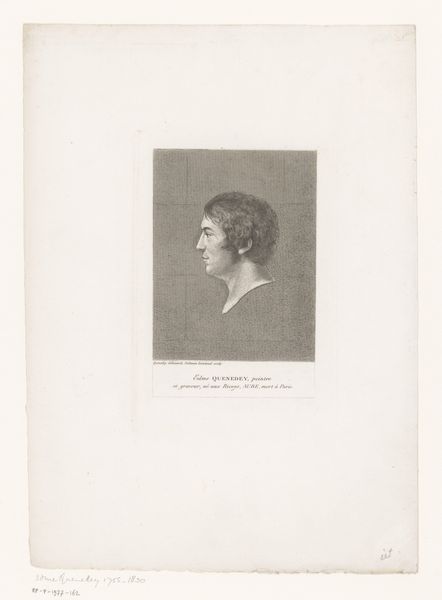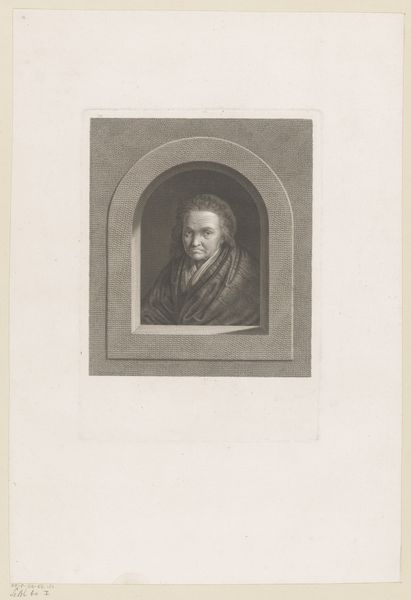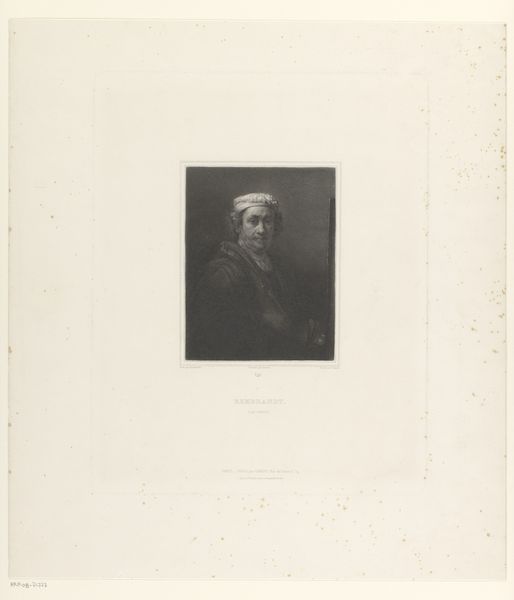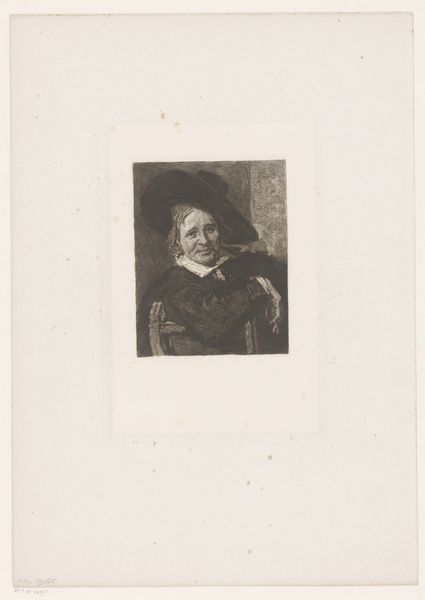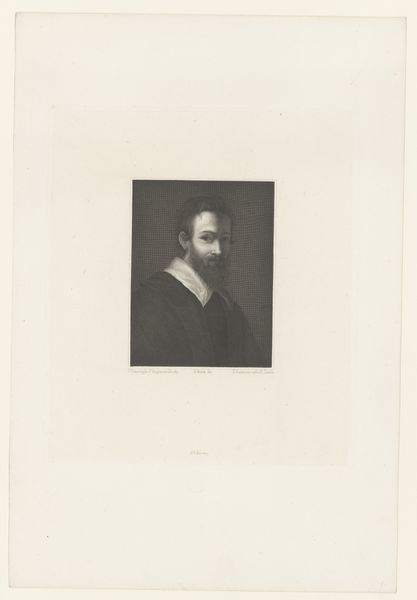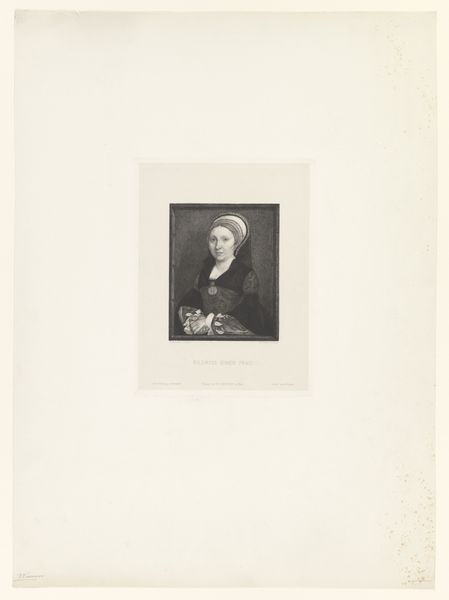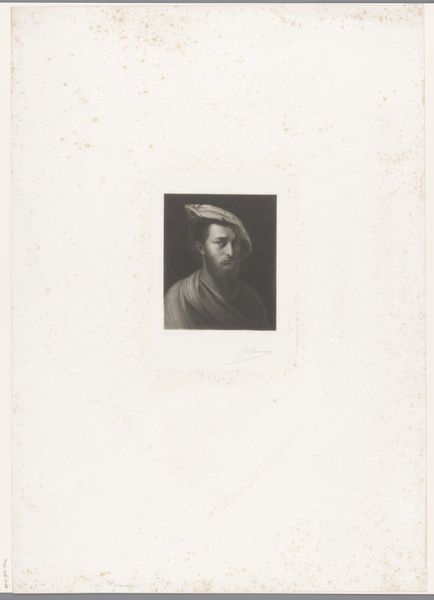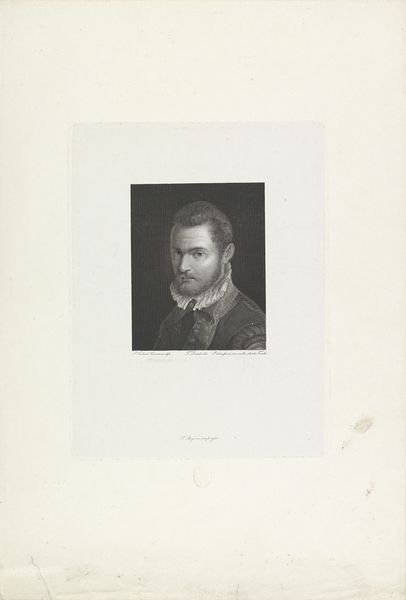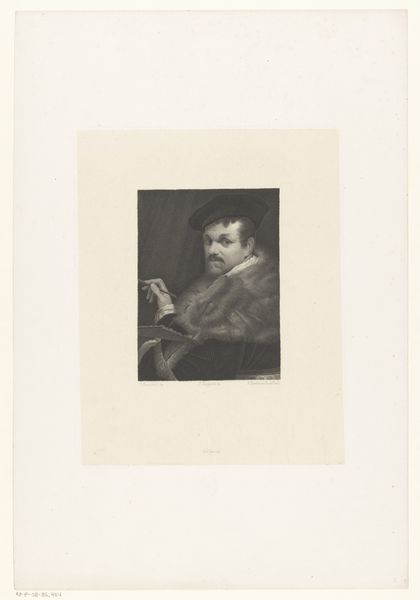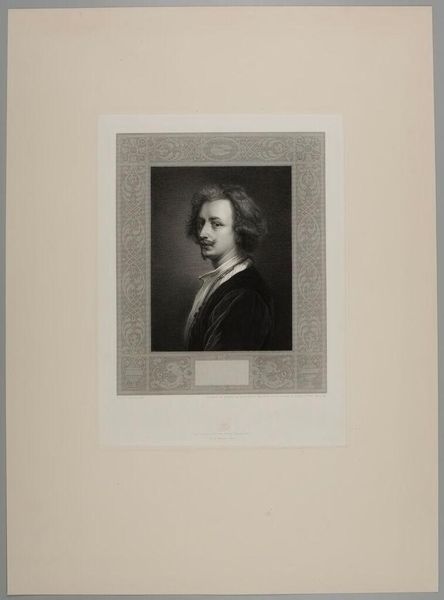
engraving
#
portrait
#
old engraving style
#
history-painting
#
academic-art
#
engraving
#
realism
Dimensions: height 235 mm, width 190 mm
Copyright: Rijks Museum: Open Domain
Curator: Well, hello there, this is a very merry fellow, wouldn't you agree? Pietro Mancion gives us “Portrait of Artist Giovanni Francesco Briglia Smiling” an engraving dating somewhere between 1813 and 1888. Editor: It’s all lines, isn't it? Look at the detail achieved purely through incision— the gradations of tone are phenomenal, but all the same the means of production, those graver’s marks, are so prominent. Curator: That very smile leaps out, though. So genuine, it nearly vibrates right off the paper. Imagine sitting for an artist and maintaining that cheerful expression. What a study in joy! It has a spontaneous feeling; as if capturing an ephemeral expression, don't you think? Editor: Right, the performance of that smile! The physical endurance, yes. The piece reveals a tension between Briglia as both laboring subject and "fine art" object, particularly for engravings made in multiples as reproducible images, think newspaper print, wallpapering designs etc. Was this Briglia making a conscious choice to engage a broader public and appeal to the rising popularity of engravings to popularize portraits? Curator: Ah, a man ahead of his time maybe! Yet, what’s intriguing is how the crisp precision actually heightens the intimacy. Each tiny stroke seems like a whispered secret. Like it goes beyond craftsmanship alone. Doesn't the engraving transform Briglia into an emblem of artistic vitality? Editor: Vitality channeled through some serious physical labor and precise skill with the burin. Even the selection of materials impacts meaning. The ready availability, standardization, and reproducibility of engravings surely speak to the changing landscape of art distribution at the time. Engraving became, in its moment, not just a medium for aesthetic production, but an industry as much as anything. Curator: In light of the materials at play and how the man power informs our reading of the final product, what if the choice of the engraving suggests accessibility or affordability for fellow artists or admirers? An avenue toward legacy outside elite circles... It democratizes the artist's image and broadens the conversation. I do admire his big smile that still feels so genuine after all these years. Editor: It makes one think of labor practices, market structures, the relationship between art object and capitalist infrastructure. It might be romantic but such labor makes something out of seemingly nothing with the available resources, like a poem carved out on paper! Curator: Indeed. Pietro Mancion really crafted something special in this smile with all the labor involved. Editor: Absolutely. A social contract etched into paper!
Comments
No comments
Be the first to comment and join the conversation on the ultimate creative platform.
